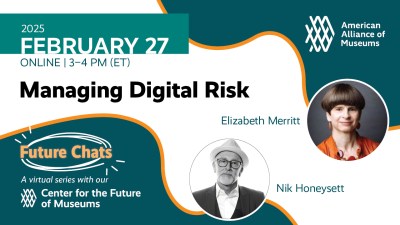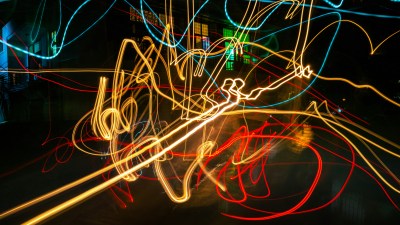
This post originally appeared on the Museum of Contemporary Art (MCA) DNA blog on October 3, 2018, and is republished here with permission.
Each year AAM’s Education Committee (EdCom) Professional Network recognizes outstanding museum educators and supporters, programs and resources that exemplify excellence. The 2018 Award for Innovation in Museum Education was received by Museum of Contemporary Art for the SPACE program. This blog showcases their award-winning work with teens. We hope you enjoy their story and are inspired to nominate your own program for a 2019 EdCom award. Nominations for awards are now open until January 31, 2019.
The MCA’s School Partnership for Art and Civic Engagement (SPACE) program is a multiyear partnership with Chicago public high schools. Its goal is to empower Chicago teens to create positive change in their communities using contemporary art strategies and expanded civic understandings. SPACE embeds artists and their studio practices inside Chicago public high schools, physically transforming space(s) in the school into creative hubs for artistic and civic exchange. For this post, Ricardo Gamboa explains their path to becoming a SPACE artist.
Gamboa is an artist, activist, and academic creating radical art and cultural and media work in Chicago and New York City. In Chicago, Gamboa is a member of Free Street Theater. In New York City, they are an alumnus of the EmergeNYC program at the Hemispheric Institute of Performance and Politics and the New York Neo-Futurists. They are finishing their doctorate degree at New York University’s renowned American studies program and received their MA in arts politics (2013) from the Tisch School of the Arts. Gamboa has won several awards including an Arts Matters Fellowship, a Joyce Award, and an International Connections Award from the John D. and Catherine T. MacArthur Foundation.
Their current projects include the underground news podcast The Hoodoisie, the community-based theater piece Meet Juan(ito) Doe and BRUJOS, the groundbreaking web series about four gay Latino doctoral students who are also witches. Gamboa has worked with more than 5,000 young people in the Americas utilizing everything from photography to theater, mural painting to web media to advance young people’s dreams and visions for social change.
—Lydia Ross, Manager of School Programs
Three years ago, I wrote a critique about a proposed performance at the Museum of Contemporary Art Chicago that relied on community engagement for its development. I believed the project repeated missteps that often happen when big institutions pursue socially engaged work, such as parachuting into communities with artists not from those communities and providing resources that disappear when those artists finish their projects and leave. So I was surprised when I was invited to learn about the MCA’s SPACE program.
Skip over related stories to continue reading articleThe SPACE program was an unexpected, revolutionary find: refurbishing old rooms to create artists studios in Chicago public schools, embedding them in the school community. Artists explore the intersection of radical imagination, education, art, and civic activism; work with teachers and students; and conceive curricula and projects to affect social change. It was a program I always hoped to be a part of as an artist. But, more importantly, growing up Mexican-American and queer on the South Side of Chicago, affected by social inequality but without the tools to understand or address it, SPACE is exactly the program I wish I had when I was a teen.
I’ve worked with hundreds of young people in Chicago. I know firsthand that youth is not wasted on video games, selfies, and chasing trends. Instead, young people—especially in Chicago—are asking hard questions about their social circumstances. But they’re not just looking for answers to simply understand their social reality. Given the tools and opportunity, they will also act in ways that are innovative and inspiring to improve the world around them.
So often, we think of art as just a complement to social change—think witty protest posters. But with the songs of the civil rights movement, fashion of the Black Power movement, poetry of the feminist movement, and murals of the Chicano movement, art has been a central, driving force for social change—so have young people.
I’m excited to spend the year at Curie Metro High School, working with young people and educators, exploring how we can make change together, with art.
Lead support for SPACE is provided by The Crown Family.
Additional generous support is provided by The Siragusa Family Foundation.









Comments